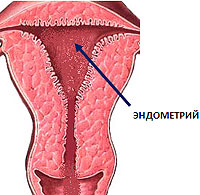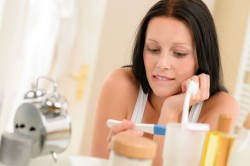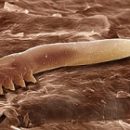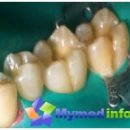To learn more about the physiological basis of the menstrual cycle and the reasons causing menstruation (menstrual bleeding), see this article.
Content
First menstruation (menarche) - a significant event for a young girl. It is the main sign of the transition from childhood to youth.
Menstruation is a natural process that marks the beginning of the girl's path to its full flourishing of both women and mother; She should not violate the usual current of her life. It should be remembered that sad or disturbing thoughts, which usually visit the girl at this time, quickly pass.
First menstruation
 Most girls menarche celebrates in 11-13 years. Depending on the physical development of the body, heredity, the constitution, nutrition, transferred diseases, the social and living conditions of the Menarche may be somewhat earlier or later. For example, for residents of average latitudes and countries of the North and Southern peoples, the age of menarh is different. Menarche's harbingers can be unmotized changes in well-being, headaches, dizziness, abdominal pain, nausea, etc.
Most girls menarche celebrates in 11-13 years. Depending on the physical development of the body, heredity, the constitution, nutrition, transferred diseases, the social and living conditions of the Menarche may be somewhat earlier or later. For example, for residents of average latitudes and countries of the North and Southern peoples, the age of menarh is different. Menarche's harbingers can be unmotized changes in well-being, headaches, dizziness, abdominal pain, nausea, etc.
In order to find out the duration of your menstrual cycle and control its rhythm, the girls must carefully record menstruation days, and better - to enter the menstrual calendar from month to month, from year to year.
Menstrual cycle consists of several phases and stages. In the first phase of the cycle allocate 3 stages. The first phase is called follicular, it begins on the very first day of the start of menstruation (menstrual bleeding) and ends at that moment when ovulation occurs. It takes about half of the entire cycle, but it may be a little shorter or longer within a few days.
Stage 1. Menstruation
In the first 2-3 days, menstrual allocations are most abundant and allocated to 3/4 of the total.
The duration and intensity of menstrual discharge is individual and even at the same girl (women) can change.
2 stage. Menstruation stops
2 stage. Menstruation stops. Under the action of the follicle-stimulating hormone, the pituitary glands occurs and the development of follicles in one of which matures an egg. Soviet follicles of ovaries in the first phase of the copper cycle produce estrogens, sex hormone stimulating the thickening of the endometrium and the preparing body of a woman to ovulation.
3 stages. Ovulation
In the middle of the menstrual cycle, you may notice the expiration of the mucus from the vagina when urinating or defecation, as well as the appearance of small milk-colored stains on the underwear. This is a sign that the eggs ripened and ready to leave the ovary.
Phase 2. Phase of a yellow body
After the egg fell off the follicle, the empty follicle is filled with a yellow substance and becomes a yellow body that produces a hormone progesterone.
If pregnancy does not come, the yellow body exists about 14 days. (12-16 days).
If the egg on the way through the palapiev pipes will not meet with sperm and not fertilizes during this time, then the yellow body reduces its activity and disappears within 2-3 days, completely terminating its existence to the first day of the next menstrual cycle.
She comes immediately after ovulation and continues as much as the yellow case exists, that is, on average, about 12 - 14 days.
Under the influence of the hormone of the yellow body - progesterone the mucous membrane of the uterus (endometrium) is even more thickened and filled with a secret (mucus). Milk glands increase the size and compacted, which is sometimes accompanied by pain.
After the egg fell off the follicle, the empty follicle is filled with a yellow substance and becomes a yellow body that produces a hormone progesterone.
If pregnancy does not come, the yellow body exists about 14 days. (12-16 days).
If the egg on the way through the palapiev pipes will not meet with sperm and not fertilizes during this time, then the yellow body reduces its activity and disappears within 2-3 days, completely terminating its existence to the first day of the next menstrual cycle.
If the egg cell is not fertilized, the endometrium is now an unnecessary shell with an uninterrupted and deceased egg cell - is derived from the body during menstruation. In this order, the menstrual cycle is repeated every month until a woman comes menopause - cessation of menstruation (usually in 45-50 years).
Menstrual cycle is usually installed for 1-1.5 years, after which menstruation must be regular. They stop at the occurrence of pregnancy and stop completely when the woman comes the period of menopause (50-55 years).









